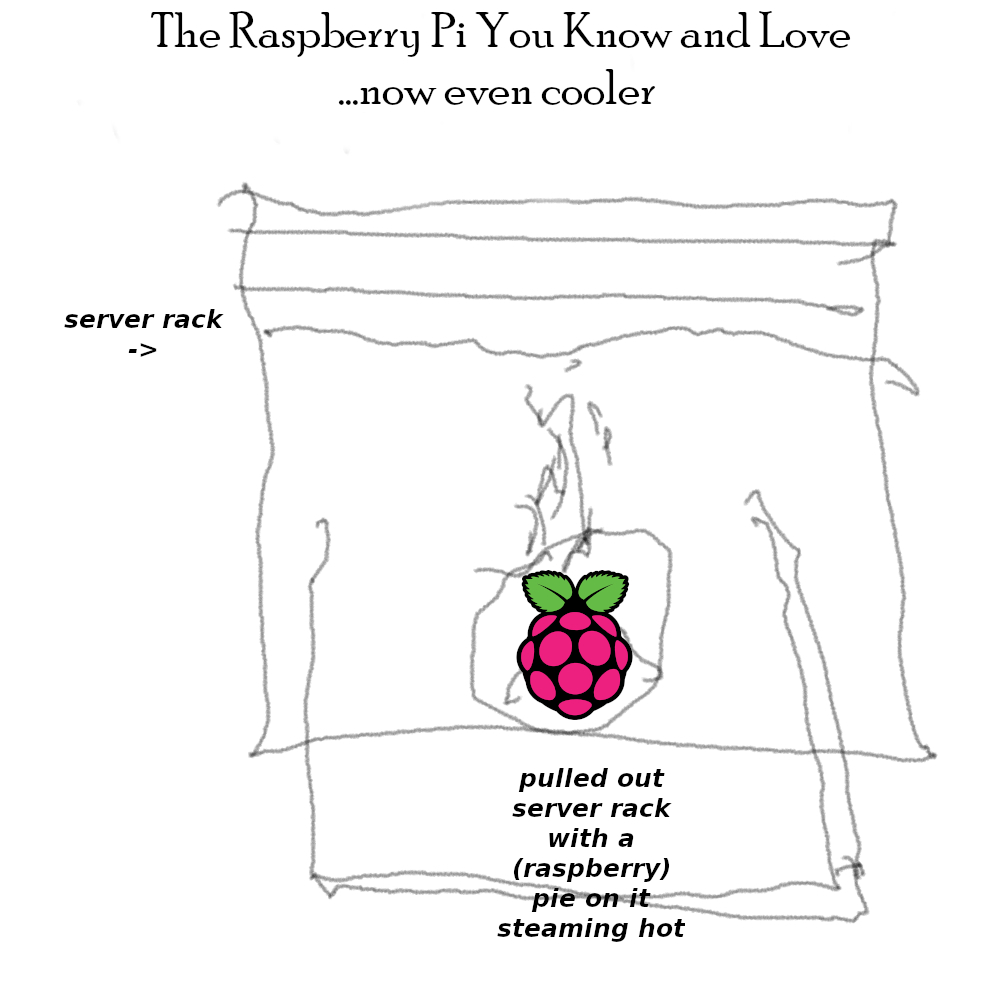Open Source Modular Raspberry Pi Compute Cluster: Difference between revisions
Jump to navigation
Jump to search
(Added some more information) |
(Minor Typo Fix) |
||
| (5 intermediate revisions by the same user not shown) | |||
| Line 6: | Line 6: | ||
*Also allows for easy maitnence due to modules being swappable + easier to fix than larger boards | *Also allows for easy maitnence due to modules being swappable + easier to fix than larger boards | ||
*Will use ethernet for networking | *Will use ethernet for networking | ||
=To-Do= | =To-Do= | ||
| Line 17: | Line 14: | ||
*Look into other networking methos (modified toslink, infiniband, higher gb/s ethernet etc) | *Look into other networking methos (modified toslink, infiniband, higher gb/s ethernet etc) | ||
*'''Make graphs for cost/core and performance/size etc''' | *'''Make graphs for cost/core and performance/size etc''' | ||
=Logo/Branding Work= | |||
==Name== | |||
*Great Marketing Name: | |||
** '''Pi Rack''' | |||
**Ie a rack of pies | |||
==Logo== | |||
*Concept is a (Raspberry) pie sitting on a slid out rack mount tray, on a server cabinet (made to look somewhat like an oven, yet still recognisable as a server cabinet), letting out steam as it cools. | |||
*Low quality concept sketch here: | |||
**[[File:Pi Rack Logo Concept V1.JPEG]] | |||
=Internal Links= | =Internal Links= | ||
| Line 22: | Line 30: | ||
=External Links= | =External Links= | ||
*[https://www.youtube.com/playlist?list=PLq6IzRhDFdPPOaYe9s4HiJhvs1omejhhy [[User:Eric]]'s | *[https://www.youtube.com/playlist?list=PLq6IzRhDFdPPOaYe9s4HiJhvs1omejhhy [[User:Eric]]'s Playlist on Similar Projects] | ||
Latest revision as of 22:35, 19 May 2020
Basics
- A Rasberry Pi , Open Rack format, Modular, Compute Cluster
- Used for Render Farms , reducing Ai Training Time , NAS processing, and Servers
- Is even more modular, upgrade-able than standard rack mount systems as it is made of many small RPi's
- May be less fast/optimized, so eventually a proper motherboard based system will be more (cost) effective
- Also allows for easy maitnence due to modules being swappable + easier to fix than larger boards
- Will use ethernet for networking
To-Do
- Choose a software/firmware
- See what power is best (ie no throttling/bottlenecks) options are: USB (easiest), Barrel Jack (more annoying to implement, especially OTS, but do-able, and POE more costly,, requires adapters
- Calculate best number of boards per OpenRack
- Going to guess 20 for now to leave room for electronics + networking
- Look into other networking methos (modified toslink, infiniband, higher gb/s ethernet etc)
- Make graphs for cost/core and performance/size etc
Logo/Branding Work
Name
- Great Marketing Name:
- Pi Rack
- Ie a rack of pies
Logo
- Concept is a (Raspberry) pie sitting on a slid out rack mount tray, on a server cabinet (made to look somewhat like an oven, yet still recognisable as a server cabinet), letting out steam as it cools.
- Low quality concept sketch here:
Internal Links
External Links
- User:Eric's Playlist on Similar Projects
